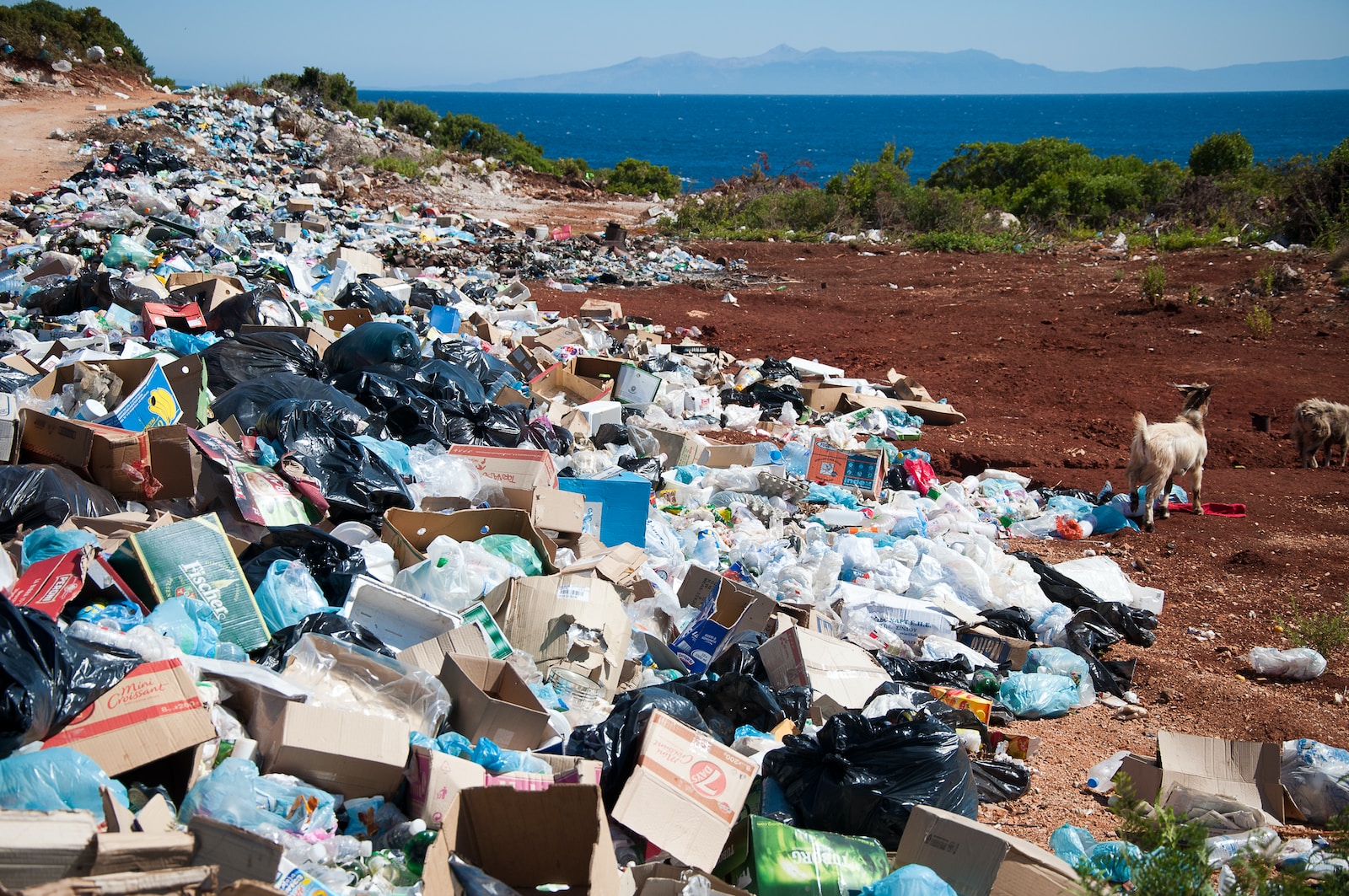Introduction
Waste management, ah, what a fascinating realm it is! A world filled with discarded treasures, forgotten remnants of our existence. It is a domain where mountains of refuse tower over us as a constant reminder of our excessive consumption and negligent habits.
But amidst this sea of waste lies an intriguing dichotomy – the division between organic and inorganic waste. Now, you might be thinking, why should I care about such trivial classifications?
Well, dear reader, let me enlighten you. Understanding the difference between organic and inorganic waste holds the key to unlocking the secrets of sustainable living and responsible stewardship.
Setting the stage: The world of waste management
Before we delve into the intricacies of organic and inorganic waste differentiation, let us first take a moment to appreciate the grandeur that is waste management. Picture massive landfills stretching as far as the eye can see, hosting an array of discarded items from humble soda cans to once-loved toys now deemed unworthy. Consider the sprawling recycling facilities bustling with activity as diligent workers sort through mountains of paper, plastic, and glass like modern-day alchemists searching for gold amidst heaps of trash.
In this world where every discarded object has a story to tell if we are willing to listen, understanding how different types of waste behave becomes paramount. Only then can we effectively tackle this gargantuan challenge that threatens not only our environment but also our very own existence.
Posing the question: What sets organic and inorganic waste apart?
Now that we have set foot on these hallowed grounds of waste management let me pose a question that will ignite your curiosity – what exactly distinguishes organic from inorganic waste? It is not merely a matter of labels or arbitrary categorizations; it goes much deeper than that.
Organic waste, my dear reader, is the embodiment of nature’s bounty. It includes anything that was once alive or derived from living organisms – from apple cores and banana peels to grass clippings and fallen leaves.
Organic waste carries within it the essence of life itself, holding the potential to be transformed through a magical process called decomposition. In contrast, inorganic waste is a stubborn residue that defies nature’s attempts at reabsorption.
This category encompasses materials that do not decay naturally or only degrade over incredibly long timescales – plastics, metals, glass, and other non-biodegradable substances. Inorganic waste persists in our environment like an everlasting scar on the face of our planet.
Understanding what sets organic and inorganic waste apart is crucial for effective waste management. It allows us to devise appropriate strategies for handling each type responsibly and minimizing their impact on our fragile ecosystems.
Organic Waste: Nature’s Bounty
Defining organic waste: From apple cores to grass clippings
Oh, the marvels of organic waste! It encompasses a vast array of materials that originate from nature itself.
From those discarded apple cores to the seemingly insignificant grass clippings left behind after mowing the lawn, organic waste represents the interconnectedness of life and death. It is composed of once-living organisms that have fulfilled their purpose and are now ready to embark on a new journey of transformation.
The beauty of biodegradability
Biodegradability, my dear readers, is truly exquisite. It is the characteristic that sets organic waste apart from its inorganic counterpart.
Unlike those stubborn plastic bottles or metallic objects that linger on our planet for centuries, organic waste possesses the remarkable ability to break down into simpler components over time. This process occurs thanks to a cast of microscopic heroes known as decomposers.
Kitchen scraps and their hidden potential
Ah, the kitchen! A treasure trove brimming with hidden potential in every discarded carrot top or onion peel.
These seemingly mundane scraps hold within them nutrients waiting to be unleashed upon our soil once more. By properly managing kitchen scraps through composting, we can turn these remnants into black gold – nutrient-rich compost that nourishes our plants and restores vitality to our depleted soils.
Composting: The magic of decomposition
Breaking down the basics of composting
Let us delve into the magical world of composting, where decomposition reigns supreme! Composting is not merely a pile of rotting matter; it is an intricate dance orchestrated by nature’s finest decomposers. Through this process, we witness nature’s resilience and creative brilliance at its best.
a) Microorganisms at work: Decomposers and their role
Tiny but mighty, decomposers are the unsung heroes of composting. Bacteria, fungi, and other microorganisms break down organic waste into its elemental components, releasing vital nutrients back into the cycle of life. They transform our discarded residues into a nourishing elixir for the Earth.
b) Temperature, moisture, and oxygen – the perfect recipe for compost
To unlock the full potential of composting, we must strike a delicate balance between temperature, moisture, and oxygen. These three elements create an optimal environment for decomposers to thrive and convert organic waste into sustainable black gold. It is a symphony of factors that requires our attention and diligence.
Benefits of organic waste management
Environmental impact reduction through methane emission prevention
Ah, dear readers! Organic waste management not only bestows upon us lush gardens but also serves as a noble shield against environmental calamities. By diverting organic waste from landfills where it would rot without oxygen, we prevent the release of methane gas – a potent greenhouse gas that wreaks havoc on our delicate climate balance.
Soil enrichment for sustainable agriculture
Allow me to regale you with yet another advantage of organic waste management – soil enrichment! The process of composting yields nutrient-rich humus that rejuvenates tired soil depleted by intensive farming practices. By embracing this natural fertilizer, we breathe life back into agricultural lands while reducing dependence on harmful chemical additives.
Closing the loop with circular economy principles
In this era of rampant consumerism and reckless resource exploitation, embracing organic waste management paves the way toward a more sustainable future. Through composting and utilizing recycled organics in various industries such as agriculture or energy production, we close the loop of the circular economy. We transform waste into valuable resources, minimizing our ecological footprint and demonstrating that there truly is no such thing as waste in a world overflowing with potential.
Indeed, dear readers, organic waste management holds within it a profound beauty born from nature’s bounty. Let us not underestimate its power nor overlook its significance in securing a more harmonious coexistence with our planet.
Inorganic Waste: The Unyielding Residue
Unveiling inorganic waste’s true nature: Inert materials that resist natural decomposition processes
Ah, the unyielding residue of our modern existence! Inorganic waste, that stubborn refuse which defies the gentle embrace of decomposition, deserves a moment of reflection. Within this category lies an array of materials that scoff at Mother Nature’s attempts to break them down.
Plastics and metals take center stage as the prime culprits in this ecological tragedy. a) Plastics’ eternal reign: Oh, plastic, you omnipresent tyrant!
Your indestructible presence haunts our planet like a never-ending nightmare. These synthetic monstrosities persist for centuries, leaching harmful chemicals into our soils and waters with reckless abandon.
We have let plastics permeate every corner of our lives without considering the long-term consequences. Our obsession with convenience has condemned us to a future choked with microplastics and marine life gasping for survival.
b) Metals that withstand time: Let us not forget about metals—those seemingly untouchable giants that defy the passage of time. Aluminum, steel, and their comrades stand tall amidst the decayed remnants of once-living matter.
While their durability may be admirable from an engineering standpoint, it is a damning attribute for our environment. These metals occupy landfill spaces indefinitely while remaining unaffected by nature’s attempt to reclaim them.
Recycling as a solution: The art of repurposing inorganic materials
Amidst this suffocating sea of inorganic waste lies a glimmering beacon of hope—recycling! Yes, my impassioned friends, recycling holds the key to mitigating the environmental catastrophe caused by these stubborn materials. a) Sorting and separating recyclables for effective processing: The first step in this grand dance of reclamation is the meticulous sorting and separation of recyclables.
It is an art that requires discipline and commitment from both the waste producers and waste management authorities. By carefully segregating plastic, metal, glass, and paper, we lay the foundation for effective recycling processes.
b) Transforming plastic bottles into fashionable garments: Ah, the transformative power of recycling! Witness how ingenious minds have found ways to turn discarded plastic bottles into fashionable garments.
Who would have thought that something once destined for a landfill could grace fashion runways? Recycling unleashes a world of creative possibilities while reducing our insatiable appetite for new materials.
As we tread further into the realm of inorganic waste management, let us not forget that recycling alone cannot solve our predicament entirely. It is merely a temporary solution, one that buys us time to explore more sustainable alternatives.
We must demand innovation from every corner of society to break free from this cycle of endless waste creation. The battle against inorganic waste rages on, and it is up to us to choose whether we stand as passive bystanders or agents of change.
The Grey Area: Hybrid Waste Materials
Exploring materials that blur the line between organic and inorganic:
As we delve deeper into the realm of waste management, we encounter a perplexing category of materials that reside in a hazy space between organic and inorganic waste. These are what I like to call “hybrid waste materials,” substances that possess characteristics of both worlds, leaving us scratching our heads and pondering their fate.
Two notable examples are biodegradable plastics and paper with synthetic coatings. Let’s unravel the mysteries surrounding these enigmatic substances.
Biodegradable plastics – friend or foe?
Ah, biodegradable plastics, hailed as the saviors of our planet’s plastic problem. But is this really the case?
While it may seem like a noble endeavor to create plastics that can break down naturally over time, there are several caveats to consider. Firstly, the term “biodegradable” itself is vague and misleading, as it does not specify how long it takes for these plastics to decompose.
Some may take years or even decades to break down completely, rendering their environmental benefits questionable at best. Secondly, many biodegradable plastics require specific conditions—such as high heat or industrial composting facilities—to degrade properly.
In reality, these conditions are rarely met outside controlled environments. Furthermore, biodegradable plastics can create confusion within recycling systems by contaminating traditional plastic streams.
Without proper labeling or standardized guidelines for disposal, consumers often unknowingly place them alongside regular plastics for recycling—a major setback for efficient waste management practices. So before we jump on the biodegradable bandwagon without a second thought, let’s critically analyze its true impact on waste reduction and question whether it truly serves as a sustainable solution or merely perpetuates our reliance on single-use materials.
Paper with synthetic coatings – an eco-friendly paradox?
Now, let’s turn our attention to another puzzling member of the hybrid waste family: paper with synthetic coatings. On the surface, this may seem like a clever combination—a traditional material enhanced with modern technology.
However, upon closer examination, we find ourselves face-to-face with an eco-friendly paradox. Picture this: you pick up a seemingly innocent paper cup from your favorite coffee shop, assuming it can be easily recycled due to its paper exterior.
But alas! Unbeknownst to you, that shiny coating on the inside is made of polyethylene—a petroleum-derived plastic—rendering the entire cup non-recyclable and destined for landfill.
The synthetic coating not only contaminates the recycling process but also prevents efficient decomposition in composting facilities. This deceptive practice of combining natural materials with synthetic coatings under the guise of improved functionality is nothing short of an environmental betrayal.
It perpetuates a throwaway culture and hampers our efforts towards sustainable waste management. We must demand transparency from manufacturers and hold them accountable for producing truly eco-friendly alternatives that do not compromise our planet’s well-being.
As we navigate through the murky waters of hybrid waste materials, it becomes clear that these substances often blur the line between organic and inorganic waste in ways that are detrimental to our environment. While biodegradable plastics may seem like a step in the right direction, their limitations and potential for mismanagement highlight their questionable efficacy.
Similarly, paper with synthetic coatings presents us with a disheartening paradox where eco-friendliness is sacrificed for convenience. As conscious consumers and custodians of this planet, let us challenge these deceptive practices and strive for genuine sustainability across all aspects of waste management.
The Role of Technology in Waste Management
Innovative Solutions for Handling Both
Technology has always been a double-edged sword, and waste management is no exception. While technology has undoubtedly played a crucial role in exacerbating our waste problem, it also holds tremendous potential to provide innovative solutions. The key lies in adopting advanced technologies that prioritize sustainability and minimize environmental harm.
One such solution is the development of advanced sorting systems. These cutting-edge machines utilize artificial intelligence and sophisticated sensors to identify and separate different types of waste materials accurately.
With remarkable precision, these technologies can segregate organic waste from inorganic counterparts, streamlining the recycling process. Moreover, the advent of anaerobic digestion technology has provided a viable alternative for managing organic waste.
This process involves the breakdown of organic matter by microorganisms in an oxygen-deprived environment, leading to the production of biogas. This renewable energy source can be used to generate electricity or heat, reducing our reliance on fossil fuels.
Additionally, advancements in chemical engineering have paved the way for innovative methods to tackle plastic pollution. Scientists are exploring techniques such as pyrolysis and depolymerization that can break down plastic waste into its base components for reuse or safe disposal.
Conclusion
Understanding the difference between organic and inorganic waste is essential for effective waste management strategies. While society must make concerted efforts to reduce overall waste generation through conscious consumption choices, technology can play a pivotal role in mitigating its impact.
Through advanced sorting systems and anaerobic digestion technology, we can better manage both organic and inorganic waste streams while minimizing environmental harm. Moreover, embracing innovative chemical engineering techniques offers hope for tackling persistent issues like plastic pollution.
By harnessing the power of sustainable technologies and fostering a culture of responsible consumption and recycling practices, we have a fighting chance at creating a cleaner future for generations to come. It is through these collective efforts that we can transform our waste problem into an opportunity for positive change, fostering a world where waste becomes a resource rather than a burden.
 Skip to main content
Skip to main content


